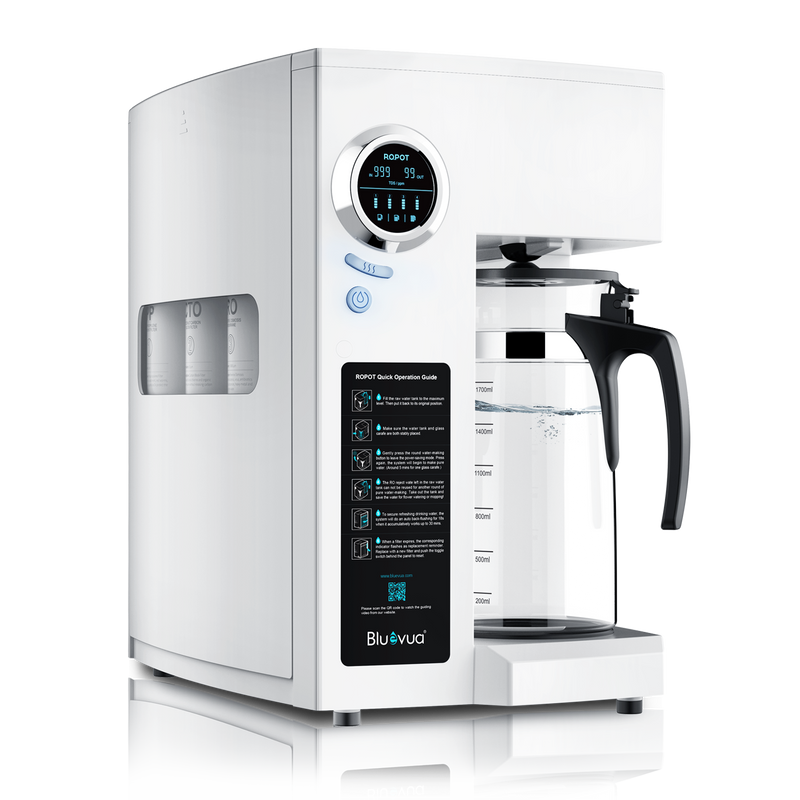Unlocking the Secrets of Reverse Osmosis: Transform Your Water Today!
In an age where clean drinking water is becoming increasingly scarce, the need for effective water filtration systems has never been more crucial. One technology that stands out in this arena is reverse osmosis (RO). This innovative method of water purification not only provides a reliable solution for removing impurities from tap water but also enhances its overall quality. As we delve into the intricacies of reverse osmosis, it’s essential to understand how this technology works and the benefits it offers. This article aims to educate you about reverse osmosis water filter system, its components, and the advantages of integrating this system into your home. Join us as we explore how reverse osmosis can transform your drinking water experience!

Understanding Reverse Osmosis Technology
Reverse osmosis is a filtration process that removes unwanted molecules and larger particles from drinking water. The technology operates on the principle of osmosis, where water moves from a region of low solute concentration to an area of high solute concentration through a semi-permeable membrane. In reverse osmosis, this natural process is reversed by applying pressure to the concentrated side, forcing water through the membrane while leaving contaminants behind. The membrane itself is a crucial component of the system, allowing only water molecules to pass through while blocking harmful substances, such as salts, heavy metals, and microorganisms. This process not only purifies the water but also ensures that it is safe for consumption, making reverse osmosis a vital technology in today’s quest for clean water.
Components of a Reverse Osmosis System
A typical reverse osmosis water filter system consists of several key components that work together to deliver purified water. The first component is the pre-filter, which removes larger particles such as sediment, dirt, and chlorine before the water reaches the RO membrane. This step is crucial, as it protects the membrane from damage and ensures its efficient operation. Next is the RO membrane itself, the heart of the system, which separates contaminants from the water. Following the membrane, post-filters are employed to further refine the taste and quality of the water, removing any remaining impurities. Some systems also include a storage tank to hold the purified water until it is needed. Each component plays a vital role in the overall filtration process, ensuring that you receive the cleanest and safest drinking water possible.
Benefits of Using a Reverse Osmosis Water Filter
The advantages of reverse osmosis systems are numerous and compelling. One of the most notable benefits is the significant improvement in water taste and odor. Many people who have switched to RO systems report that their water tastes fresher and cleaner, free from the chlorine and sediment that can be present in tap water. Moreover, reverse osmosis effectively removes a wide range of contaminants, including lead, arsenic, and nitrates, which can pose serious health risks. This makes RO systems an ideal choice for families concerned about water quality. Additionally, investing in a reverse osmosis system can lead to cost savings over time, as it reduces the need for bottled water, which can be expensive and environmentally taxing. Overall, the health benefits and enhanced drinking experience make reverse osmosis a preferred option for home water filtration.
Installation and Maintenance of Reverse Osmosis Systems
Installing a reverse osmosis system might seem daunting, but with the right guidance, it can be a straightforward process. Most systems are designed for under-sink installation, which requires some plumbing knowledge. Homeowners should consider factors like available space and access to a water supply. It’s essential to follow the manufacturer’s instructions for installation, ensuring all connections are secure to prevent leaks. Once installed, maintaining a reverse osmosis system is relatively simple. Regularly replacing pre-filters and post-filters according to the manufacturer's guidelines is crucial for optimal performance. Additionally, periodic checks of the RO membrane will help ensure it is functioning effectively. By investing a little time in maintenance, you can extend the life of your system and enjoy clean, safe drinking water for years to come.
Transforming Your Water Quality with Reverse Osmosis
In summary, reverse osmosis technology offers a powerful solution for ensuring clean and safe drinking water. By understanding how this system works and the components involved, you can appreciate the numerous benefits it provides—from improved taste and quality to health safety. As water quality continues to be a pressing concern worldwide, considering the implementation of a reverse osmosis water filter system in your home is a wise investment. Not only does it enhance your drinking experience, but it also safeguards your family's health. Embrace the transformative power of reverse osmosis and take the first step towards cleaner, safer water today!






Comments